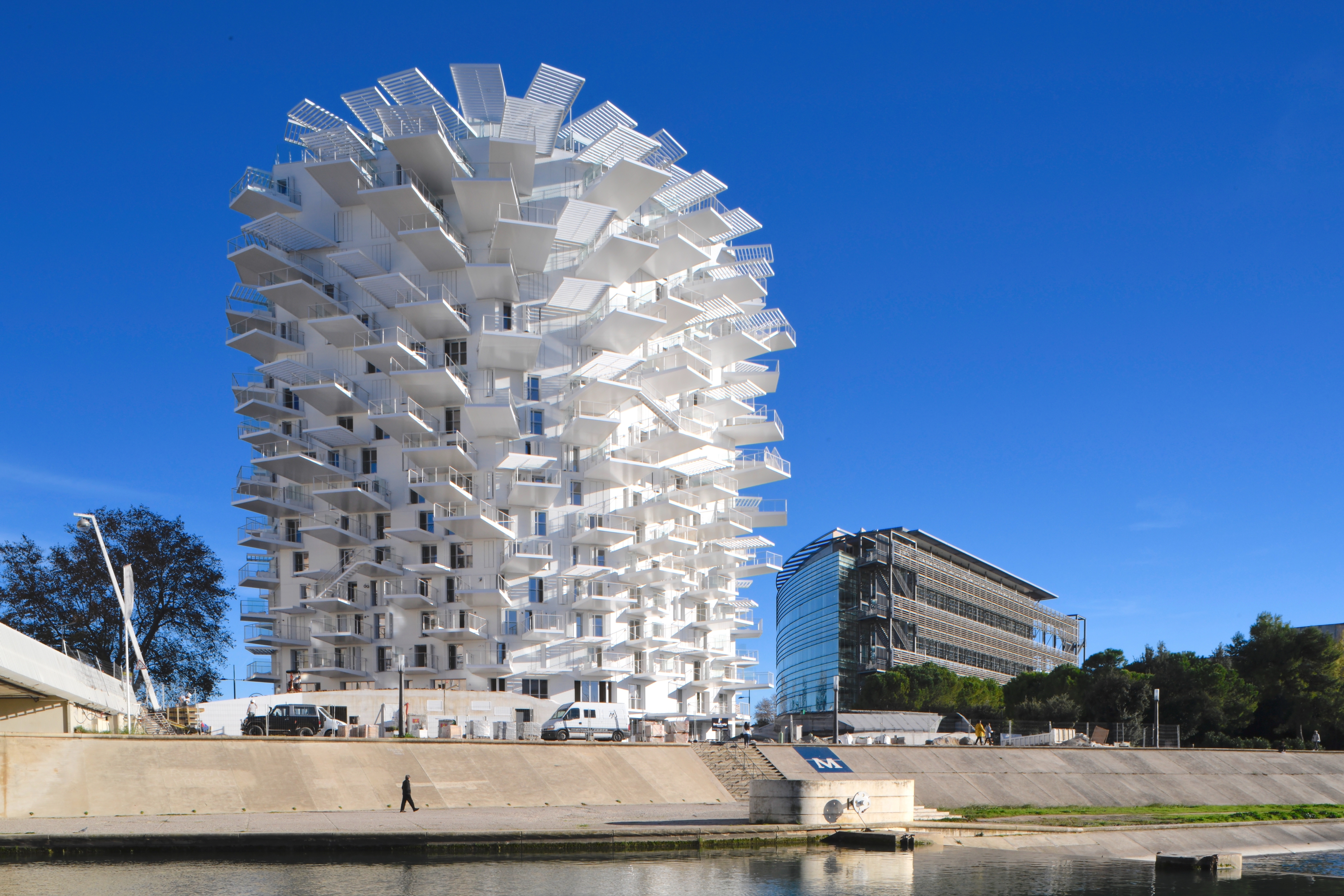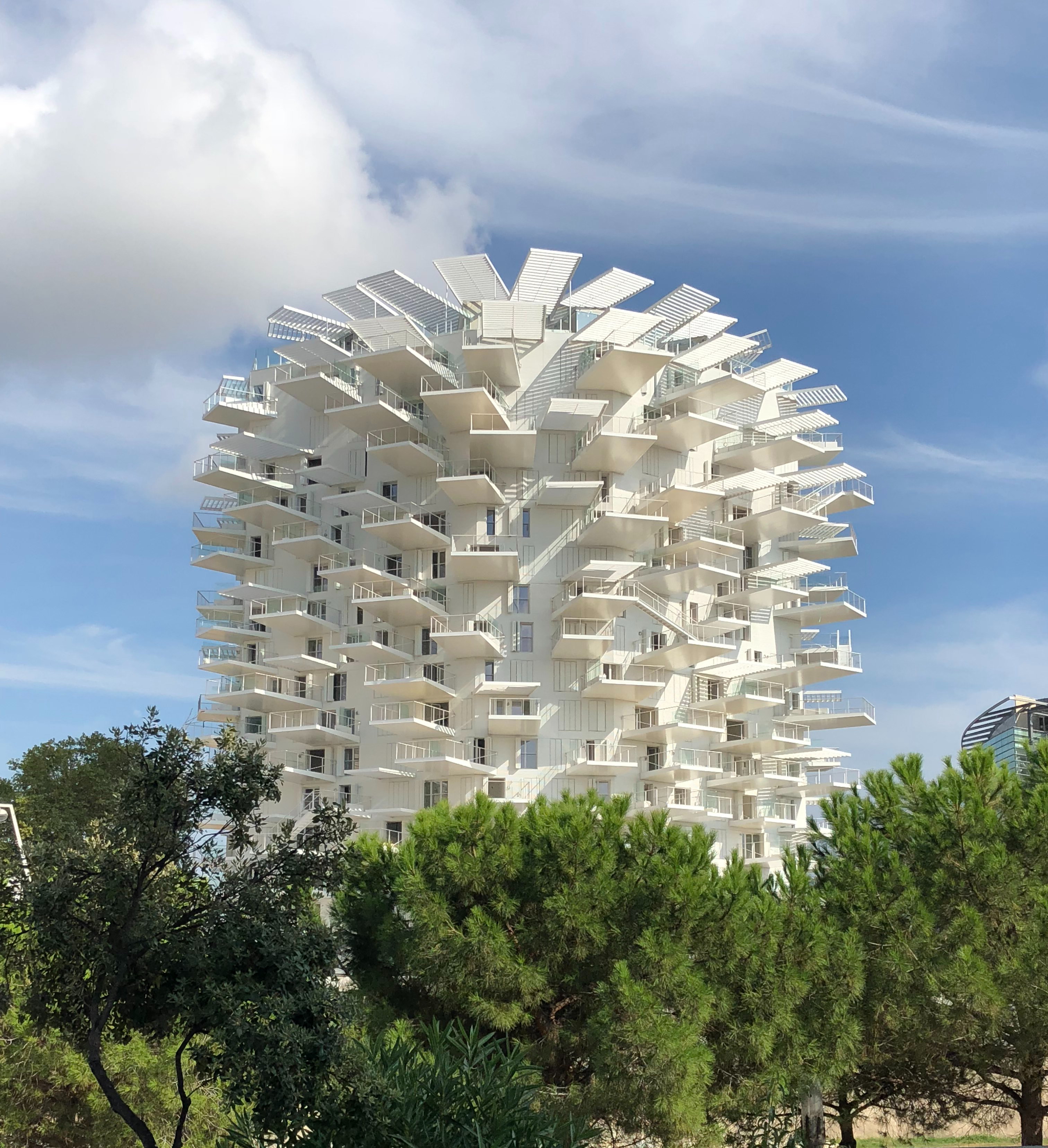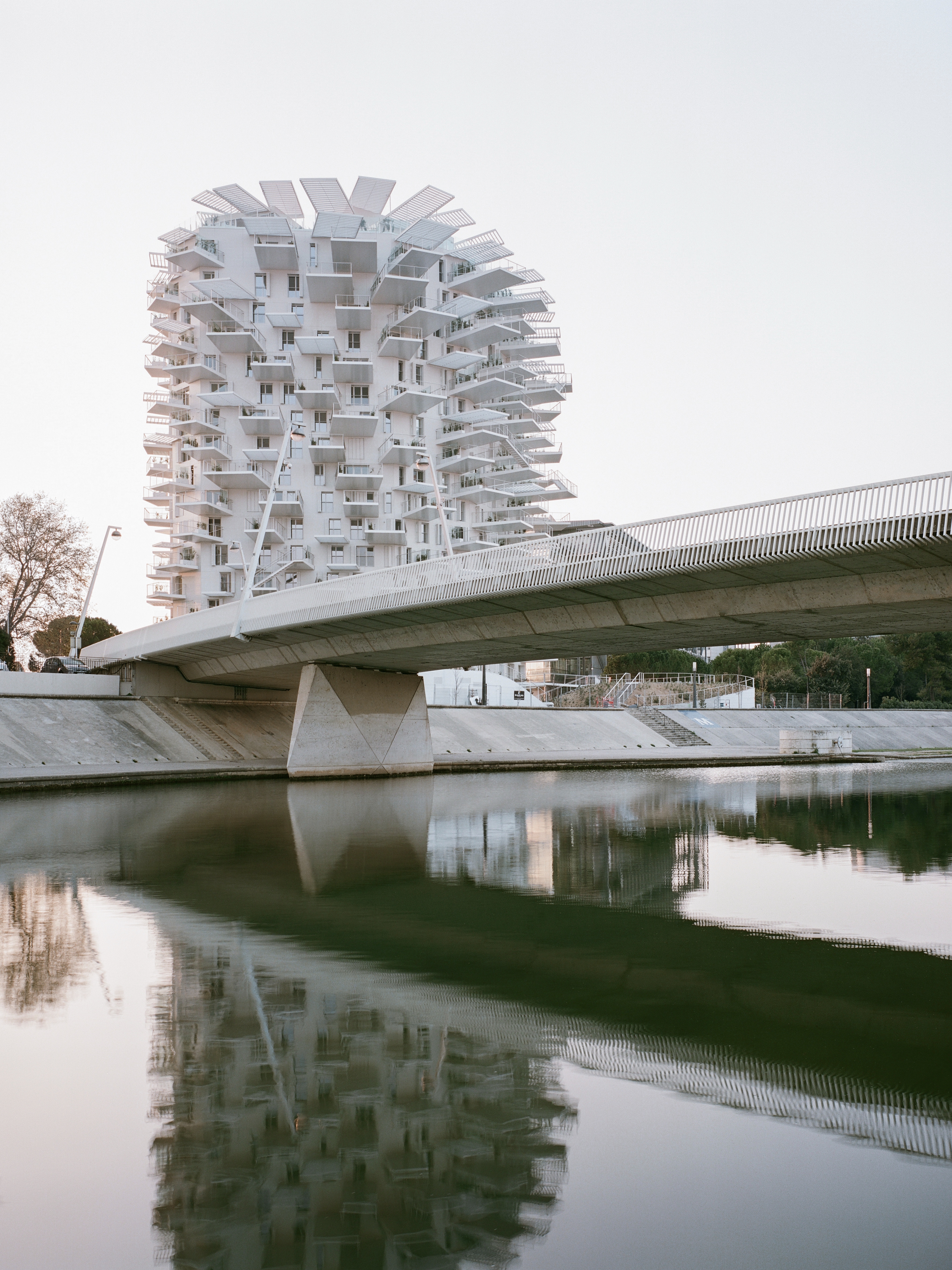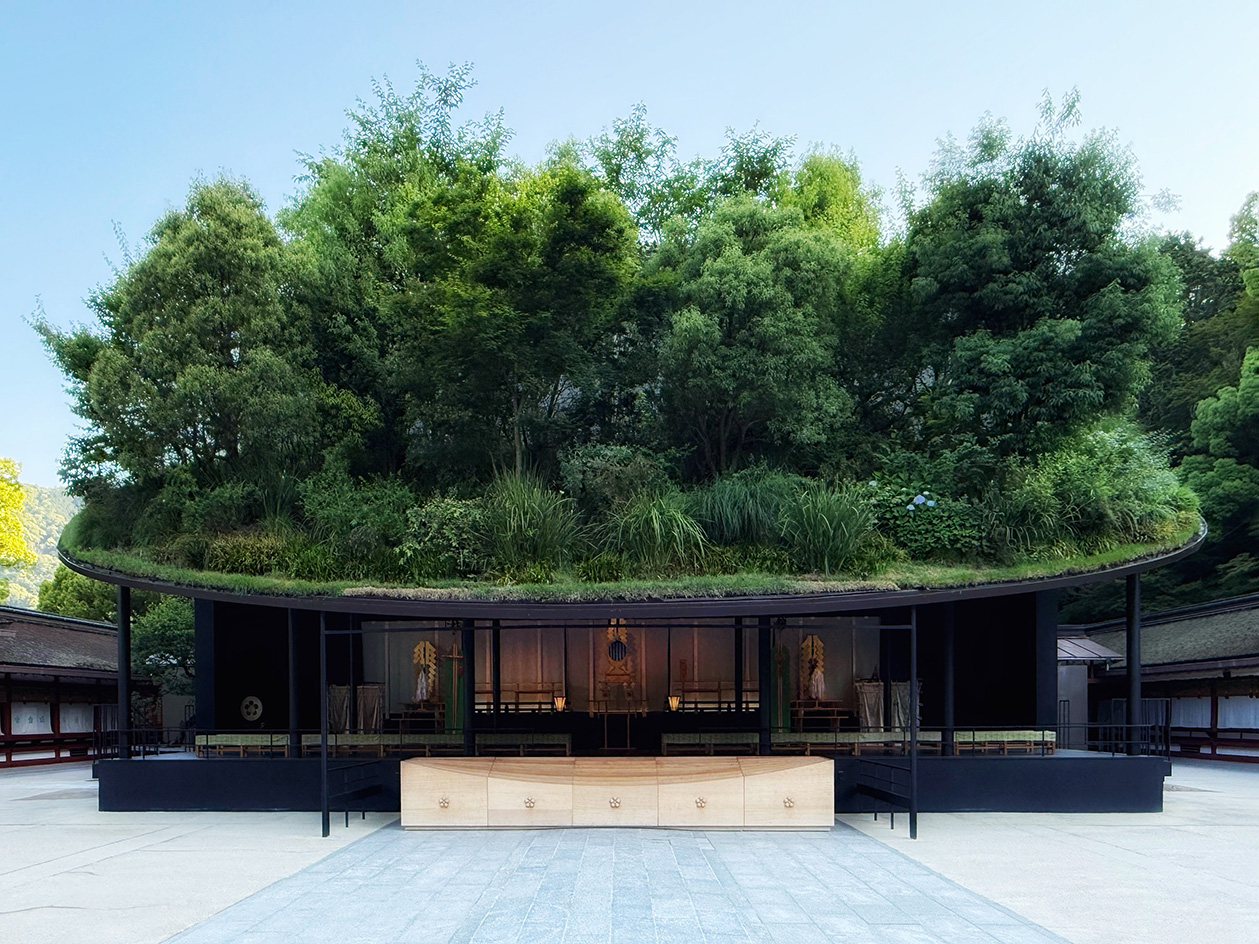Architects reinvent the residential tower block in Montpellier with L’Arbre Blanc

Sailing into Montpellier from the Mediterranean means meandering along the River Lez. Along the way you’ll pass a number of eye-catching white buildings, such as the giant laser gun-shaped Place de la Méditerranée; the Arènes de Palavas-les-Flots stadium; the sweeping crescent of the Esplanade d'Europe and maybe the pyramids of La Grande-Motte, if you came in from the East.
And now a new structure is set to compete for your gaze: L’Arbre Blanc, or, ‘The White Tree’, in English. The 17-storey ‘tree' of apartments rises up from a row of real riverside trees, boasting an array of balconies, which sprout out from its portly core.
L’Arbre Blanc is the work of four architects: Sou Fujimoto, Manal Rachdi, Nicolas Laisné and Dimitri Roussel. The foursome came together after Montpellier city council launched a design competition in 2013, which eyed a ‘beacon tower’ coming from a team comprising a young architect working with an experienced practitioner. Seeing their chance, Rachdi, Laisné and Roussel — who run OXO Architectes, Nicolas Laisné Architects and DREAM Architecte in Paris respectively — reached out to Fujimoto in Tokyo. The Japanese architect says it was the ‘honest, respectful and truly enthusiastic’ approach of the French team that convinced him to join them.

From there, a series of workshops took place in Tokyo. ‘Feelings and understanding of the site' were shared, continues Fujimoto. Montpellier is bathed in sunshine 300 days of the year. The solution? Balconies and mini pergolas — and lots of them. Arranged in almost chaotic fashion, they service the building’s 113 apartments, ground floor art gallery and bar and resident common area at the top. As a result, each apartment has a minimum of 7 sq m outdoor space, which can be furnished. The biggest (duplex) apartments boast 35 sq m, the façade’s dazzling visual complexity being furthered with these apartment’s balconies being divided onto numerous levels and being connected via external stairs.
Fujimoto, meanwhile, was keen to stress that the tree metaphor was not the project’s starting point. ‘The tree is more of an associated image that came after the project was conceived' he said, adding that the natural form came about through catering to users’ needs, something which produced a building ‘close to a sort of plant, or a tree, spreading in the air, reaching to the sun.'





INFORMATION
sou-fujimoto.net; nicolaslaisne.com; dream.archi; oxoarch.com
Receive our daily digest of inspiration, escapism and design stories from around the world direct to your inbox.
-
 Roland and Karimoku expand their range of handcrafted Kiyola digital pianos
Roland and Karimoku expand their range of handcrafted Kiyola digital pianosThe new Roland KF-20 and KF-25 are the latest exquisitely crafted digital pianos from Roland, fusing traditional furniture-making methods with high-tech sound
-
 Fulham FC’s new Riverside Stand by Populous reshapes the match-day experience and beyond
Fulham FC’s new Riverside Stand by Populous reshapes the match-day experience and beyondPopulous has transformed Fulham FC’s image with a glamorous new stand, part of its mission to create the next generation of entertainment architecture, from London to Rome and Riyadh
-
 A contemporary Mexican hotel emerges from a 16th-century ruin in Mérida
A contemporary Mexican hotel emerges from a 16th-century ruin in MéridaA renovation project by Zeller & Moye, Mérida’s new Hotel Sevilla wears its architectural interventions lightly, mixing new brutalist elements into listed interiors and a palm-filled courtyard
-
 This Fukasawa house is a contemporary take on the traditional wooden architecture of Japan
This Fukasawa house is a contemporary take on the traditional wooden architecture of JapanDesigned by MIDW, a house nestled in the south-west Tokyo district features contrasting spaces united by the calming rhythm of structural timber beams
-
 Take a tour of the 'architectural kingdom' of Japan
Take a tour of the 'architectural kingdom' of JapanJapan's Seto Inland Sea offers some of the finest architecture in the country – we tour its rich selection of contemporary buildings by some of the industry's biggest names
-
 Matsuya Ginza lounge is a glossy haven at Tokyo’s century-old department store
Matsuya Ginza lounge is a glossy haven at Tokyo’s century-old department storeA new VIP lounge inside Tokyo’s Matsuya Ginza department store, designed by I-IN, balances modernity and elegance
-
 The Architecture Edit: Wallpaper’s houses of the month
The Architecture Edit: Wallpaper’s houses of the monthThis September, Wallpaper highlighted a striking mix of architecture – from iconic modernist homes newly up for sale to the dramatic transformation of a crumbling Scottish cottage. These are the projects that caught our eye
-
 Utopian, modular, futuristic: was Japanese Metabolism architecture's raddest movement?
Utopian, modular, futuristic: was Japanese Metabolism architecture's raddest movement?We take a deep dive into Japanese Metabolism, the pioneering and relatively short-lived 20th-century architecture movement with a worldwide impact; explore our ultimate guide
-
 A new Tadao Ando monograph unveils the creative process guiding the architect's practice
A new Tadao Ando monograph unveils the creative process guiding the architect's practiceNew monograph ‘Tadao Ando. Sketches, Drawings, and Architecture’ by Taschen charts decades of creative work by the Japanese modernist master
-
 A Tokyo home’s mysterious, brutalist façade hides a secret urban retreat
A Tokyo home’s mysterious, brutalist façade hides a secret urban retreatDesigned by Apollo Architects, Tokyo home Stealth House evokes the feeling of a secluded resort, packaged up neatly into a private residence
-
 Landscape architect Taichi Saito: ‘I hope to create gentle landscapes that allow people’s hearts to feel at ease’
Landscape architect Taichi Saito: ‘I hope to create gentle landscapes that allow people’s hearts to feel at ease’We meet Taichi Saito and his 'gentle' landscapes, as the Japanese designer discusses his desire for a 'deep and meaningful' connection between humans and the natural world